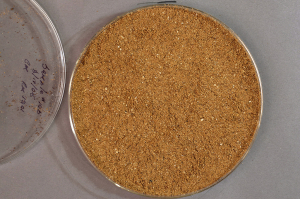The Contents of Commercial Dog Food Companies
One of the most intimidating statistics is that in the last forty years, since the proliferation of commercial pet foods, dogs’ life spans have shortened by roughly 18%. That’s hard to believe, until you realize that in a year, an average 50 lbs dog will ingest approximately 18 lbs of preservatives if consuming a poor quality food from a commercial dog food company. It’s no surprise then, that aside from automobile-related incidents, the leading cause of death for dogs is cancer – 1 in 4 dogs will die of it. And that’s not the worst part:
And it gets even scarier. Persistent rumors that meat and bone meal contained euthanized animals prompted the FDA to do a study. The result showed that the euthanizing drug pentobarbital was found in pet food from major dog food companies. It was found in meat, bone meal and generic animal fat. And that’s not all: heavy metals, antibiotics, bacteria (E-coli, salmonella), pesticides, fertilizers and hormones have all been found in pet food.
So what does that mean exactly? Just that dogs and cats that have been euthanized are allowed in pet food!
In Canada, the types of meat permitted in natural dog food recipes are regulated by the Canadian Food Inspection Agency. It clearly states on their website that condemned meats are cleared for use in pet food, provided a veterinarian has approved them. You can read more about the definition of condemned meats in Canada, and their use in pet food, by visiting the Canadian Food Inspection Agency’s website at http://www.inspection.gc.ca/. Why should anyone have the authority to say that a meat that has been classified as condemned (and therefore inedible) is suddenly OK to use in pet food?
Everything you Needed to Know about Meat Meals
The US Food and Drug Administration (AAFCO) defines meat meal as:
“The rendered product of mammalian tissues, exclusive of any added blood, hair, hide, trimmings, manure, stomach and rumen contents.”
Oddly enough, this means that any of the aforementioned attributes can be used in meat meal provided the food manufacturer doesn’t add anything extra. Would you want to ingest any of these things? Not only is it disgusting, but our pets have a very difficult time digesting these ingredients.
Meat meals are processed at high temperatures that denature protein, meaning this cooking method destroys the amino acids that make up protein. Meals are therefore poorly digested and provide little nutritional value.
Rendering and Meat Meal
Rendering is the process of taking meat and meat byproducts, including condemned meats (as noted on the Canadian Food Inspection Agency’s website), and cooking them at high temperatures. This is then processed to separate grease from raw materials. This material is finely ground and the result is meat meal.
Vitamins and Minerals
When you read the labels for commercial dog food companies you see that the words “fortified with vitamins and minerals”, I’m sure your first reaction is a happy one. Understandably. However, most people don’t realize that these “fortified” foods contain raw ingredients that are so unwholesome that vitamins and minerals have been added to the food.
Dry dog food is especially problematic. The process of actually producing dry dog food is so intense, that manufacturers usually have to add vitamins and minerals back to the food, after it’s been cooked, in order to make it have any nutritional value whatsoever. In addition, the food is sprayed with fat that was removed during the rendering process in order to make it palatable for dogs to eat.
Human Grade Dog Food
In an ideal world, there would be no such thing as “dog food” – everything would just be food. Like people, dogs require whole, human grade dog foods to provide the correct natural combination and balance of vitamins and minerals. Dry dog food didn’t exist 100 years ago, yet healthy dogs have been living on this planet for thousands of years!
Food to Never Feed Your Dog
Good vs. Bad Nutrition
If you’re looking for a telltale sign that your dog is healthy, look for:


